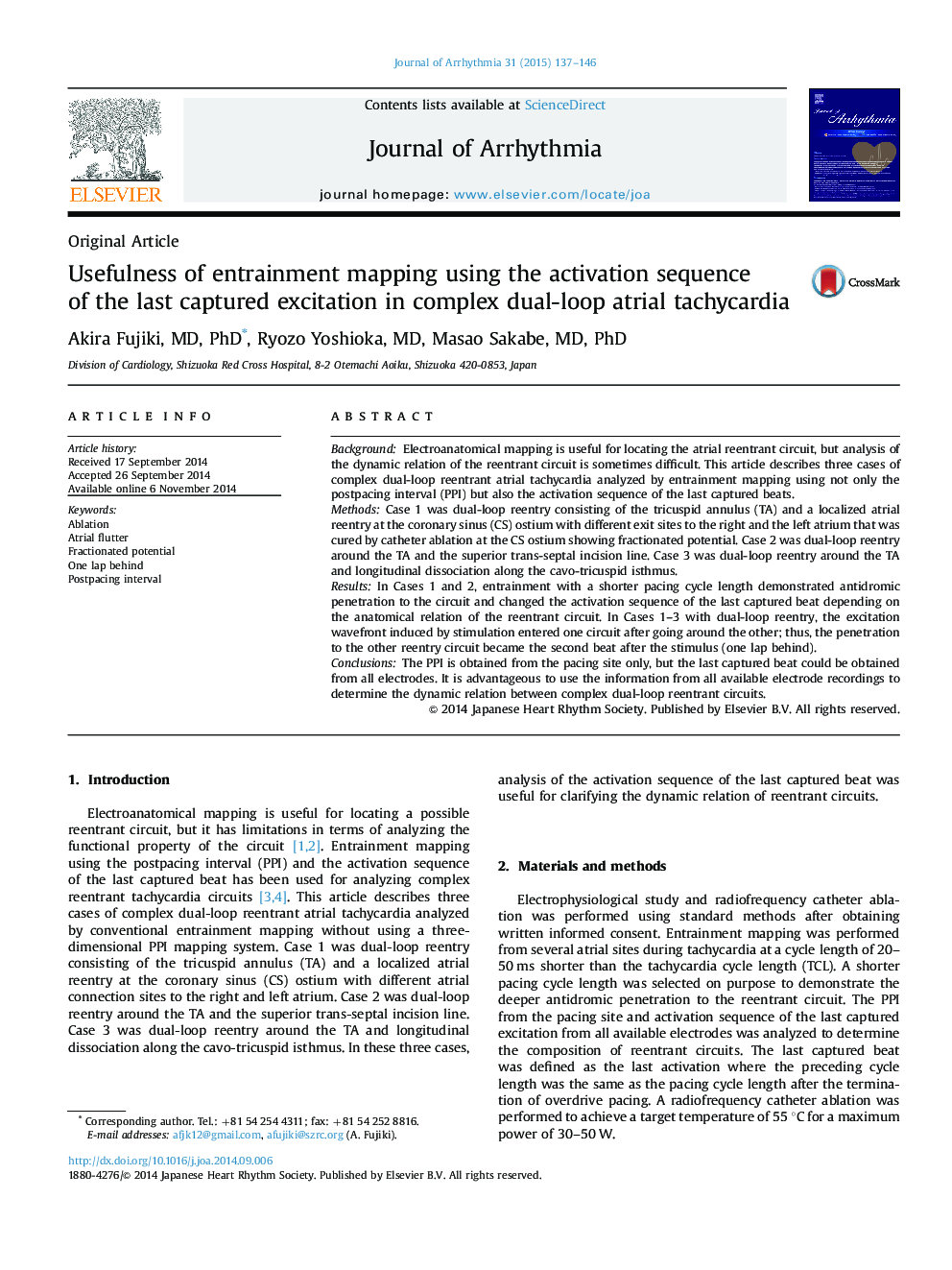| Article ID | Journal | Published Year | Pages | File Type |
|---|---|---|---|---|
| 2957621 | Journal of Arrhythmia | 2015 | 10 Pages |
BackgroundElectroanatomical mapping is useful for locating the atrial reentrant circuit, but analysis of the dynamic relation of the reentrant circuit is sometimes difficult. This article describes three cases of complex dual-loop reentrant atrial tachycardia analyzed by entrainment mapping using not only the postpacing interval (PPI) but also the activation sequence of the last captured beats.MethodsCase 1 was dual-loop reentry consisting of the tricuspid annulus (TA) and a localized atrial reentry at the coronary sinus (CS) ostium with different exit sites to the right and the left atrium that was cured by catheter ablation at the CS ostium showing fractionated potential. Case 2 was dual-loop reentry around the TA and the superior trans-septal incision line. Case 3 was dual-loop reentry around the TA and longitudinal dissociation along the cavo-tricuspid isthmus.ResultsIn Cases 1 and 2, entrainment with a shorter pacing cycle length demonstrated antidromic penetration to the circuit and changed the activation sequence of the last captured beat depending on the anatomical relation of the reentrant circuit. In Cases 1–3 with dual-loop reentry, the excitation wavefront induced by stimulation entered one circuit after going around the other; thus, the penetration to the other reentry circuit became the second beat after the stimulus (one lap behind).ConclusionsThe PPI is obtained from the pacing site only, but the last captured beat could be obtained from all electrodes. It is advantageous to use the information from all available electrode recordings to determine the dynamic relation between complex dual-loop reentrant circuits.
